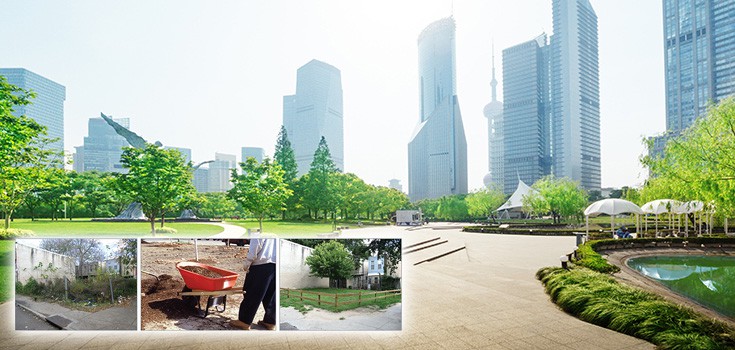Green Environments Reduce Depression, Increase Feelings of Worthiness

Could more nature and greenery improve mood and mental health? In one city, people who were exposed to a community-based intervention that converted vacant lots into green spaces reported significant improvements in depression and other negative feelings.
“Cleaning and greening” vacant urban lots was linked to a notable drop in residents’ feelings of depression and worthlessness, as well as a minor increase in overall mental health, the study found.
Study co-author Dr. Eugenia South, an assistant professor of emergency medicine at the University of Pennsylvania’s Perelman School of Medicine, said:
“Vacant lot greening is a very simple structural intervention that’s relatively low-cost and that can have a potentially wide or broad population impact. Performing simple interventions to the neighborhood environment has an impact on health.”
The results – though were first seen just a few years ago – are timeless.
Nature Truly is the Best Medicine
We have covered this topic numerous times in the past. In one previous study, walking in a park for 30 minutes improved both the physical and mental health of participants.
In another study, people who walked in a green area did less “ruminating” and their brain scans showed less brain activity related to inner, negative self-talk.
In fact, spending time in nature is associated with reduced stress and depression, and even a lower risk of developing cancer.
Details of the Philadelphia Study
For this study, researchers identified 541 vacant lots in Philadelphia, Pennsylvania, and divided them into clusters: groups of lots within a quarter-mile radius that all showed signs of urban blight, like illegal dumping, abandoned cars, and overgrown vegetation.
Next, the team interviewed 442 adults living within one of these clusters. The participants were told they were selected for a study focusing on “improving our understanding of urban health,” and answered questions concerning their own mental health.
None of the volunteers were aware that the researchers were actively working to “green up” urban spaces.
Following the completion of the surveys, the researchers randomly selected 37 lot clusters to transform into green spaces, removing trash and debris, planting grass and trees, installing a fence, and performing routine maintenance.
Another 36 clusters were also cleaned up, but little else was done to make them greener.
The remaining 37 clusters were left untouched.
Within 18 months of completing the restoration efforts, 342 of the original study participants were interviewed, including 1/3 of whom lived near one of the transformed clusters.
Impacts and Implications of the Green Initiative
Compared to those who lived near lots that were cleaned up but left otherwise untouched, people experienced a 41% decline in depressive feelings and an almost 51% drop in feelings of worthlessness. [1] [2]
The drop in depressive feelings and feelings of worthlessness are likely directly correlated to green spaces, as participants living near clusters that went through trash removal but little else saw no significant mental health benefits.
South remarked:
“The green space in and of itself is important. There are several mechanisms through which that’s proposed to happen, including increased social connections and recovery from mental fatigue and coping with general life stress. The fact that it’s green space, and not, say, a parking lot, is important. The wooden fence also matters: That fence kind of delineates the space as a space that is now being cared for – it’s a space that people are paying attention to.”
The initiative was especially beneficial to those living in neighborhoods falling below the poverty line, according to South. In those areas, there was a 70% drop in depressive feelings. [2]
“The poorer neighborhoods are the most hard-hit, as far as the neighborhood environment being dilapidated and run down. Those people are potentially the people who have the biggest health impact from the neighborhood environment, so making changes to this environment could have the biggest impact on them.”
Transforming an empty lot comes with a price tag of about $1,600, and it costs about $180 per year to maintain it, so it costs relatively little to drastically improve the lives of the people living nearby, South commented.
The researchers have teamed up with the Pennsylvania Horticultural Society to extend the program to other areas of Philadelphia, and other cities have expressed an interest in the initiative.
Greening cities isn’t a cure-all for depression, but it’s a ‘pretty low-cost intervention.’

